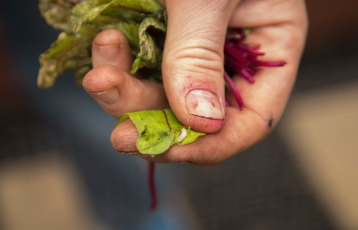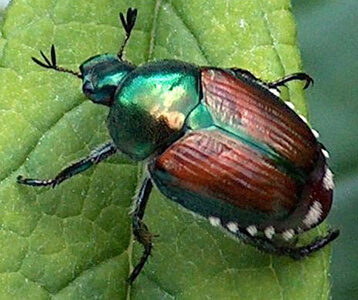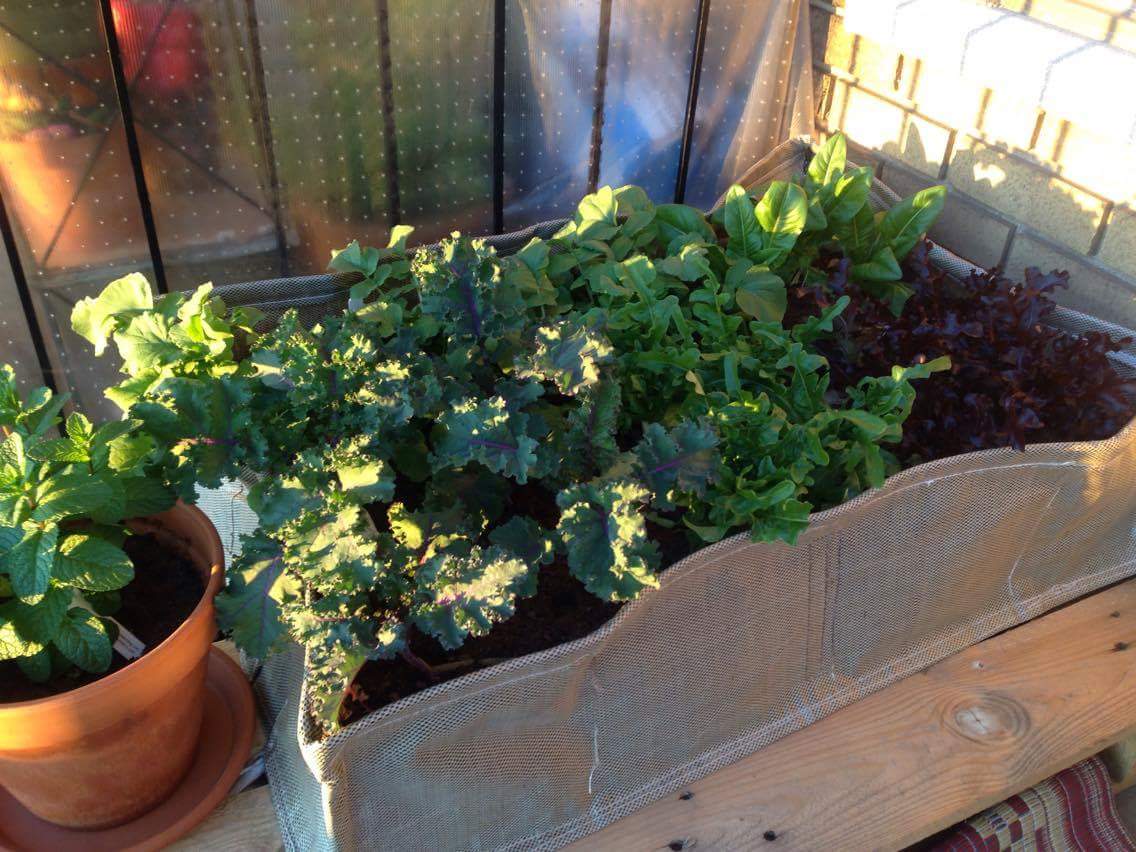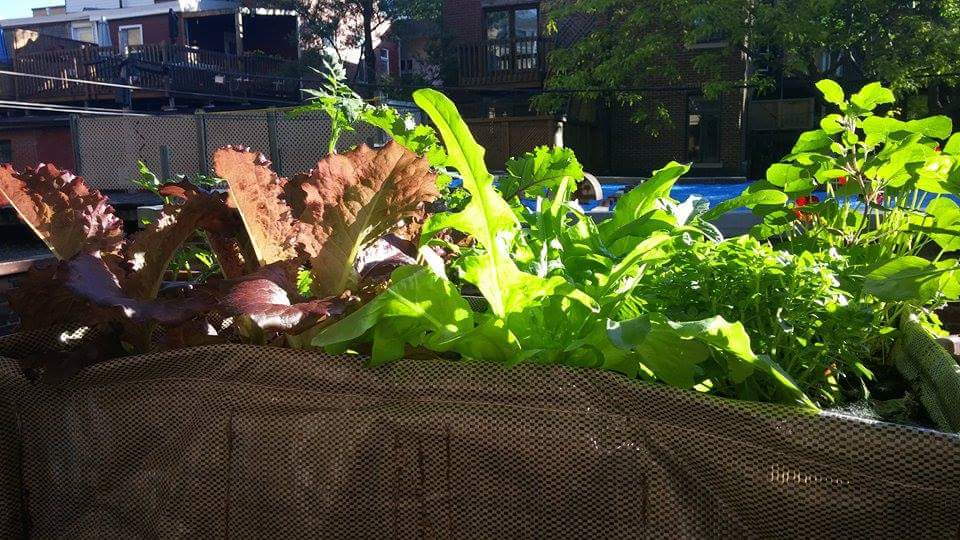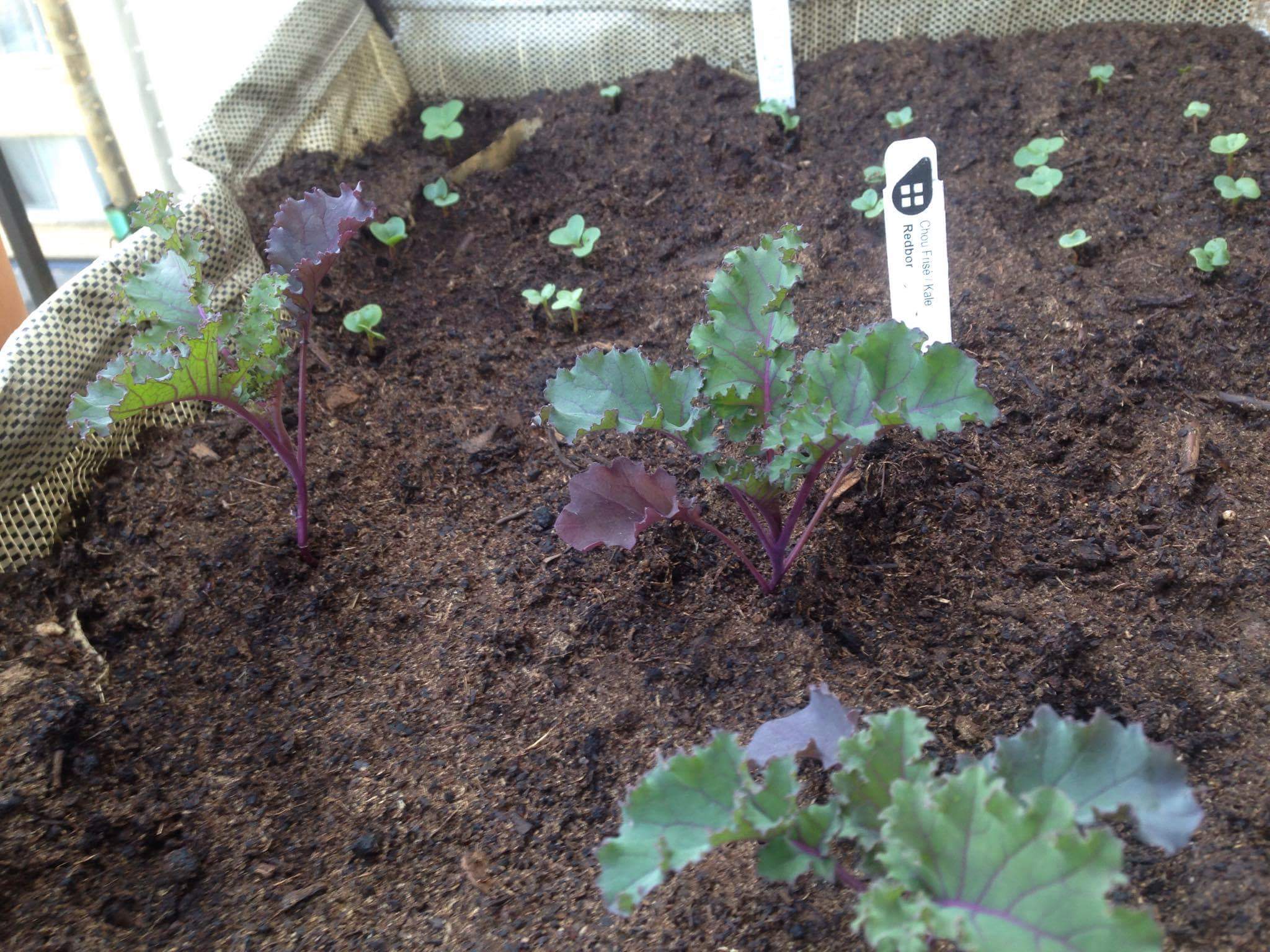Spring
Having a raised-bed garden means that your soil warms up quickly and you can start planting mid-April as soon as the soil is thawed. Add fresh soil and compost to top up your bed. Spring crops include leafy greens such as spinach, kale, lettuce and radish. For better results start your leafy green seedlings 4 weeks before planting in your garden. You can also purchase a wide variety of leafy greens in our garden centre. Radishes can be seeded directly into the garden, and they will be ready to harvest in 25 days.
If the spring has been particularly cold or overcast, germination of seed-planted crops like peas, carrots and beets and radishes will be slow. Strategies to keep your spring plant in a bit longer and get your summer crops in quickly are as follows:
- Remove one lettuce, spinach or bok choy per square to make space for the pepper or eggplant as per your garden plan.
- If you don’t care too much for radishes, remove them and sauté leaves-and-all for a stir fry. If you love radishes, clear out a few to make space for the cucumbers and leave the rest to grow.
- If you don’t care too much for peas, harvest the young shoots for your salads to make room for the tomatoes. If you love peas, let them grow up the trellis. We will be leaving them in all season this year, so they will be sharing trellis space with the tomatoes.
Colder weather is great for leafy greens so harvest away!
Summer
If the spring was cold, you will likely keep your greens in the garden. Eventually, they will start to bolt. A tall spike will start to grow from the middle of the lettuce plants and eventually flower. If you want to learn more about bolting, read through Bolting Explained. Lettuce becomes bitter and should be removed from the garden to make room for the summer crops. Kale and Swiss chard are the only greens that will not bolt and will stay in your garden all season.
You are now adding summer crops to your garden. To learn more about spacing check out our guide to plant spacing. As a rule of thumb, summer crops such as tomatoes, peppers, eggplants and cucumbers are planted one per square foot.
When we plant tomato plants, we take advantage of super tomato adaptation. Tomatoes can grow roots all along the stem. Remove the bottom couple leaves and plant the tomato deep in your garden so that only 5 or 6 inches are sticking out the top. This will give your tomato a much bigger root structure and make for a more vigorous and productive plant.
To maximize space in your garden, plant your tomatoes the Urban Seedling way by planting them in front of your peas. They will share the trellis for a time, but eventually the peas will start to yellow and the tomatoes will need to be intertwined into the trellis. Pull out yellowing peas and wrap tomatoes into the trellis as demonstrated in our video.
Fall
One you have harvested your root vegetables, onions, beets and carrots will have more space in the garden. The end of August and early September is a great time to replant leafy greens and radishes. You can purchase already started seedlings in our Urban Seedling garden centre. Get the most out of your fall harvest.
